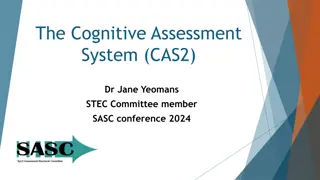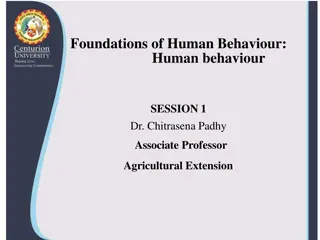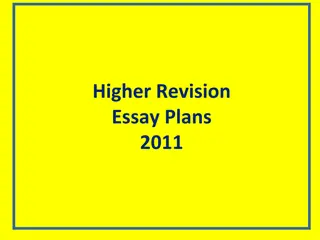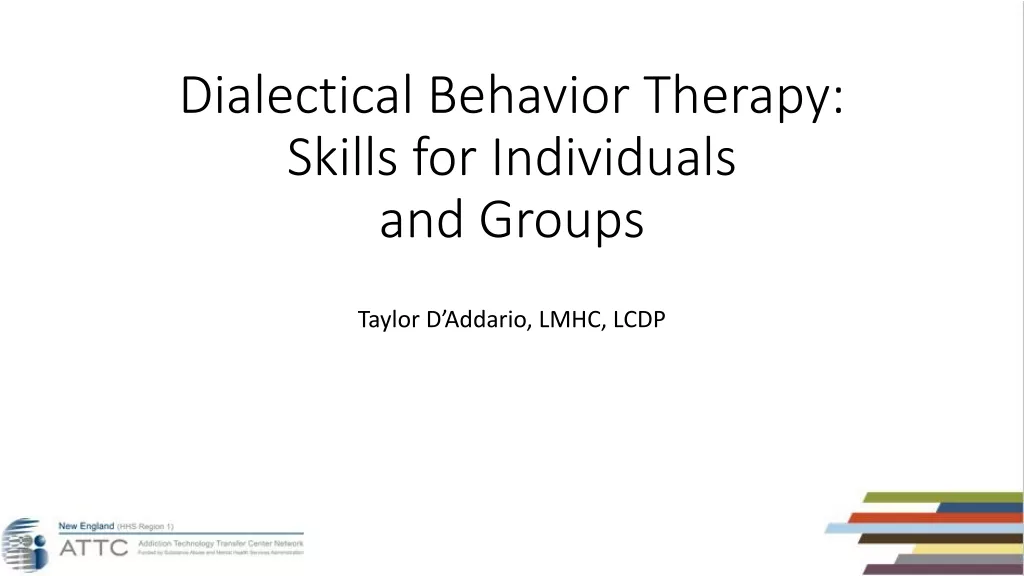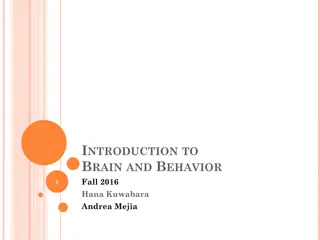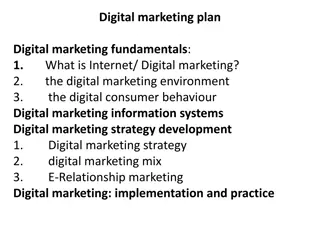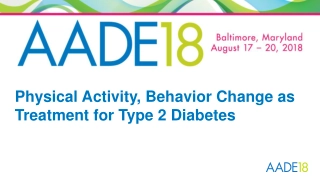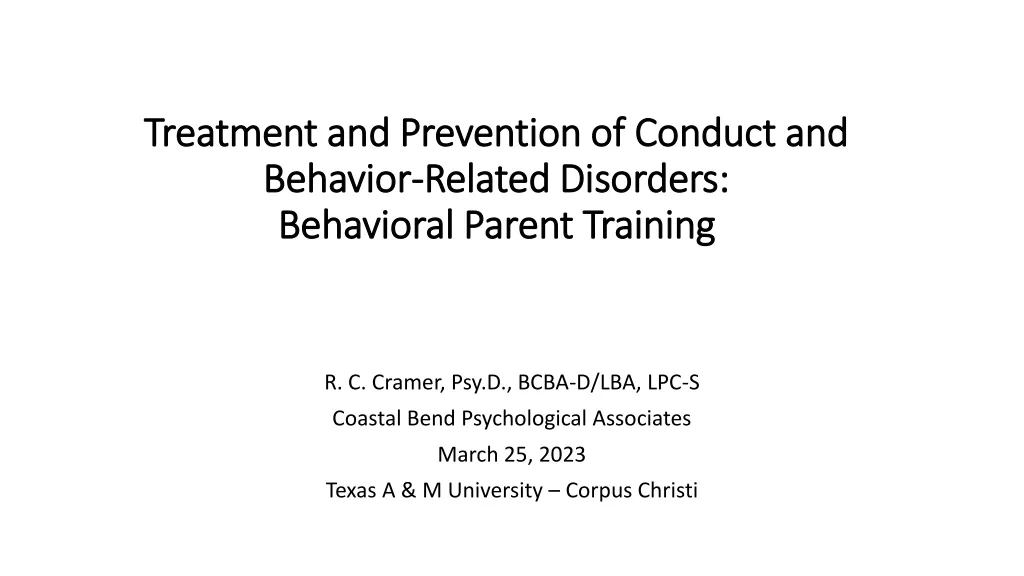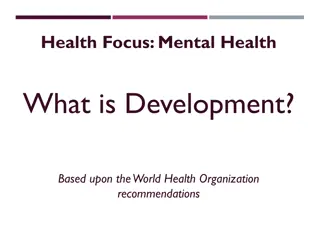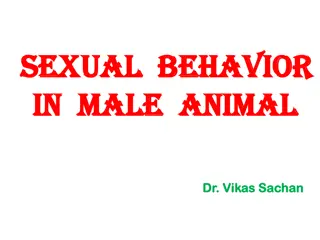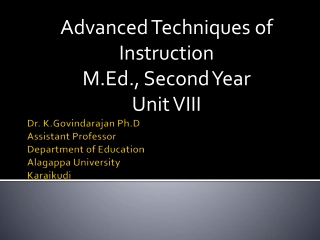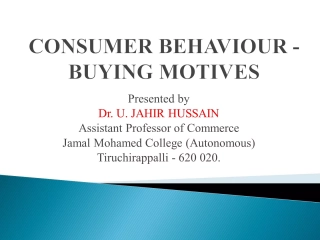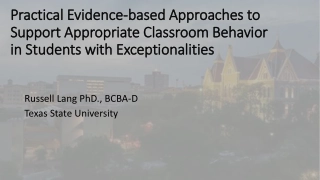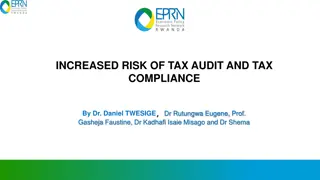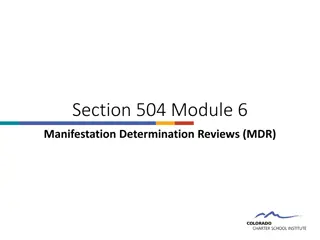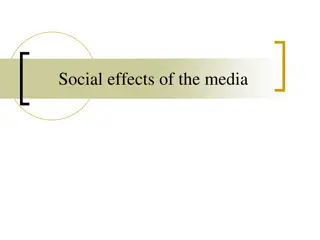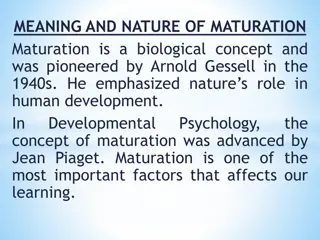Understanding the Cognitive Approach to Behavior
Cognitive processing involves the various mental activities such as thinking, remembering, believing, and decision-making that influence our behavior. This approach examines how these processes are organized through memory, schemas, and thought, and how they are influenced by culture, gender, and emotion.
- Cognitive Approach
- Behavior Understanding
- Memory Processing
- Mental Activities
- Psychological Processes
Download Presentation
Please find below an Image/Link to download the presentation.
The content on the website is provided AS IS for your information and personal use only. It may not be sold, licensed, or shared on other websites without obtaining consent from the author. Download presentation by click this link. If you encounter any issues during the download, it is possible that the publisher has removed the file from their server.
Presentation Transcript
Welcome to IB Psychology Welcome to IB Psychology
IB Learner Profile IB Learner Profile
Experiment Experiment Shopping List I am going to give you 200 to spend at Bluewater. You must buy at least 15 items Please write yourself a shopping list
Repeat/Image Repeat/Image Apple repeat Moon image Watch repeat Love image Cup repeat Pen image Justice repeat Police image Clothes repeat Jewellery image Flame repeat Mouse image Notes repeat Apathy image Fear repeat Chocolate - image
How many words did you How many words did you remember? remember? More repeat? More image? Apple repeat Moon image Watch repeat Love image Cup repeat Pen image Justice repeat Police image Clothes repeat Jewellery image Flame repeat Mouse image Notes repeat Apathy image Fear repeat Chocolate - image What did you notice about the words? Lets go back to that shopping list . Please can you write down everything on your list.
What are some of the factors that impact on your memory? An apology Social scientists should abide by a code of ethics, meaning that participants are fully informed about the aims of an experiment.
Structure of course SL/HL Structure of course SL/HL
The Cognitive Approach to The Cognitive Approach to Understanding Behaviour Understanding Behaviour PART 1: COGNITIVE PROCESSING Cognitive processing is a term used to describe the thinking, remembering, believing and decision- making that we all engage in throughout our lives. Some of this shows up in brain scans as correlated with certain areas of the brain; many of the processes are affected by culture, gender and emotion. This section looks at the organisation of our cognitive processing, through memory, schemas and thought.
Cognitive Approach to Cognitive Approach to understanding behaviour understanding behaviour
Shut your eyes for 1 minute: What can you hear? Shut your eyes for 1 minute: What can you feel? Key Terms: Habituate Selective attention
Can you think of a smell that reminds you of someone or an experience? Is there a song that brings back a memory for you?
In order to evaluate this model, it is necessary to explore research into the existence of separate memory stores. One way to research the existence of separate memory stores is to look at time lapse before recall and see how it affects memory of items earlier in a list when compared with items later in a list. Glanzer and Cunitz (1966) conducted research into this serial position effect. They found that participants recalled more words from the beginning of a list of words (the primacy effect) and the end of a list of words (the recency effect) than those from the middle of the list. This suggests that the earlier words in the list had been transferred to LTM and that words later in the list were still in STM. Is this what happened with your shopping list? Add Primacy and Recency effect to your Tier 3 vocabulary sheet
https://www.ibpsyc hmatters.com/mod els-of-memory
The Multistore model of memory The Multistore model of memory How does this research provide support for the multi-store model of memory?
2.1.1 Glanzer & Cunitz (1966) Two storage mechanisms in free recall. The aim was to test the hypothesis that there are two distinct storage mechanisms that produce the serial position curve in free recall. The two experiments conducted in 1966 were investigating the serial position effect... When asking people to remember a list of words which is greater than the capacity of short- term memory, they have a tendency to remember words from the beginning and end of the list There were 2 experiments to form the overall study:
Experiment 1 Long Term Memory Method 240 Army enlisted men were split into groups of 20. They were presented with 20 word main lists which were formed of commonly known one syllable nouns. The groups each had 3, 6, or 9 seconds between the words (measuring the spacing between words). The groups were split further, so that some would hear the word repeated once, some twice, some three times, and some not at all (measuring the effect of repetition on recall). After each list was presented the participants had 2 minutes to record the words they recalled in a booklet in any particular order. Results: For the first 15 words, participants were more accurate in the condition with a 9 second gap (spacing). This shows support for Long Term memory being a separate store, as there was a higher score in accuracy with more chance of rehearsal (Primacy Effect).
Experiment 2 Short Term and Long Term Memory Method 46 Army enlisted men were split in to three different groups. Each participant heard a list of words, and depending on the group they were in, would have to repeat them with 0 second delay (immediate free recall), 10 second or 30 second delay (free recall after interference task). Results: Participants recalled more words at beginning (primacy) and end (recency) of the list in the 0 second delay group. The interference task removed the recency but not the primacy effect. Implies that primacy words were stored somewhere different to recency words, therefore providing evidence for two separate memory stores. Glanzer, M., & Cunitz, A.R. (1966). Two storage mechanisms in free recall. Journal of verbal Learning & Verbal Behavior, 5, 351-360.
Real life application Real life application The case of Clive Wearing: https://www.youtube.com/watch?v=Vwigmktix2Y
Evaluation Evaluation Evaluation is an essential skill for Psychology and makes up % of your IB Psychology exam. Evaluation can be positive Evaluation can be negative Evaluation can involve finding other research which supports the findings of a study. Evaluation can comment on the practical applications of research. Evaluate these lunchbox items:
Use these sentences to create evaluative statements about Atkinson and Shiffrin s multi-store model of memory. Studies by Glanzer and Cunitz 1966 support the requirement of rehearsal for info to pass from the STM to the LTM. Peterson and Peterson (1959) found participants could recall 90% of nonsense trigrams after 3 seconds, but only 5% after 20 seconds, which suggests STM duration is limited to a maximum of 30 seconds. Studies by Glanzer and Cunitz 1966 provide evidence for the existence of the primary and recency effect. The multi-store model is supported by amnesia cases. Patients either lose their LTM or their STM abilities but not both, supporting the idea that STM and LTM are separate memory stores. The multi-store model focuses on structure and the neglects the processes. The case of Clive Wearing: https://www.youtube.com/watch?v=Vwigmktix2Y
Typical Exam Questions Typical Exam Questions 1) Discuss models of memory (22 marks) 2) Outline the influence of emotion on memory (9 marks)
Comparing memory models Comparing memory models Multistore model (Atkinson & Shiffrin) 1978 Working Memory (Baddeley & Hitch) 1974 Key Features Supportive Evidence Evaluation +VE Evaluation -VE
Multistore model (Atkinson & Shiffrin) 1978 Working Memory (Baddeley & Hitch) 1974 Central Executive (management system) Phonological loop (temporary storage for auditory info) Visuo Spatial sketch pad (visual cache and inner scribe) Episodic buffer (accounts for interaction between working & LT memory. Key Features Sensory register Short-Term Memory (STM) Requirement for rehearsal Long-Term Memory (LTM) Supportive Evidence Murdoch s study illustrated the primacy & recency effect, something that can be explained by the multi-store model. Baddeley and Hitch Dual Processing task Case study of KF Glanzer and Cunitz (1966) illustrated Shows how we can complete tasks simultaneously if using different slave systems Evaluation +VE Supportive evidence. Real life cases such a Clive Wearing Not much is known about the actual workings of the central executive or episodic buffer. Evaluation -VE Focus on process and structure is neglected.





